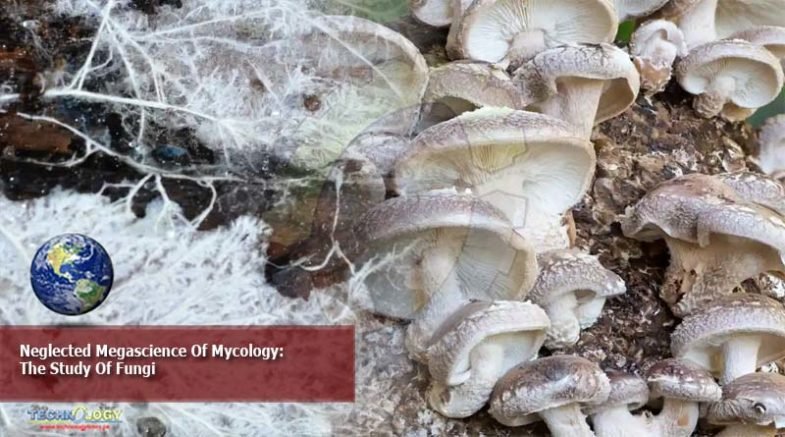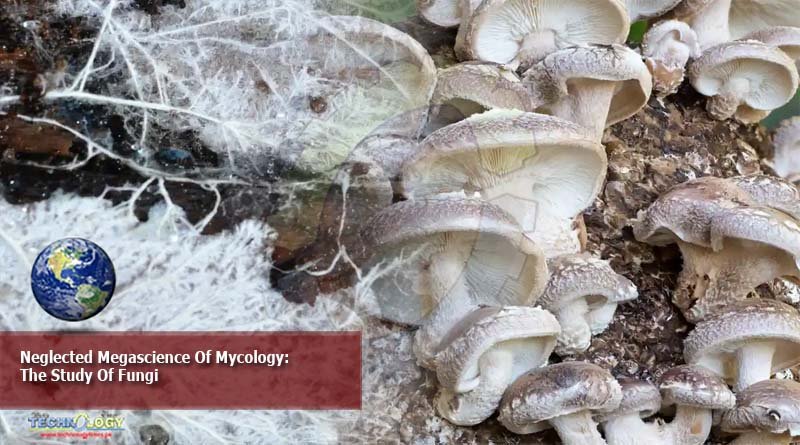The study of fungi has long been overshadowed by more glamorous scientific quests. But biologist Merlin Sheldrake is on a mission to change that

As a boy, Merlin Sheldrake really loved the autumn. In the garden of his parents’ house – he grew up a few moments from Hampstead Heath, which is where he and I are walking right now, on an overcast summer morning – the leaves would fall from a big chestnut tree, forming gentle drifts into which he liked nothing more than to hurl himself. Wriggling around until he was fully submerged, Sheldrake would lie there, quite content, “buried in the rustle, lost in curious smells”. As he writes in his wondrous new book, Entangled Life, these autumnal piles were both places to hide and worlds to explore.
But as the months passed, they shrank: reaching into them, trying to find out why, he would pull out matter that looked more like soil than leaves. What was going on? Turning to his father for an answer (he is the son of Rupert Sheldrake, the controversial science writer best known for proposing the concept of “morphic resonance”) was how he first came to learn about decomposition, and thus it is to these rotting leaves that we may trace his original interest in the “neglected megascience” of mycology – the study of fungi – even if neglect is a relative term. “In east Asia, fungi have been loved and revered for thousands of years,” he says. “In China, there are temples to the man who worked out how to cultivate shiitake mushrooms. But yes, in the west it has been neglected.”
There are, he thinks, two reasons for this. The first is straightforward: only recently have technologies been available that allow scientists fully to investigate the fungal world; to open up the hidden realms that lie beneath us, invisible to the eye. The second is historical. “There is an entrenched disciplinary bias,” he says. “Fungi weren’t seen as their own kingdom of life until the 60s. Mycologists were put in a corner of the plant sciences department, rather than in their own fungal sciences department. This had a huge impact – if you’re not training researchers, it will be neglected.” Outside science, many people, if not most, associate fungi only with mushrooms. “And they are ephemeral,” he says. “It’s as if we could only see the flowers and fruit of a tree, and not the rest of it: its leaves, stems and roots.” He shakes his curls. “Fungal taxonomy has been a total mess for ages. Linnaeus described it as chaos, a scandal of art. Through the middle ages and into the 18th century, people had no grasp at all of it. They thought mushrooms came up where lightning struck – that you could tell which one was going to kill you by boiling it with a wooden spoon.”
Even now, the non-mycologist often experiences a strange ambivalence when it comes to fungi, one that can encompass both disgust and fear, and a powerful attraction; there’s a reason why Raymond Briggs called his smelliest character Fungus the Bogeyman. In Entangled Life, Sheldrake describes the horror stirred in Gwen Raverat’s Aunt Etty by the pungent and suggestively shaped stinkhorn mushroom, Phallus impudicus (Raverat, the engraver and memoirist, was the granddaughter of Charles Darwin). Etty would, Raverat recalled in 1952, “sniff her way” through her local wood, armed with a special stick with which she used to poke the stinkhorns into her basket. She would then take them home and burn them “in deepest secrecy on the drawing room fire with the door locked – because of the morals of the maids”. As Sheldrake notes, her exploits would have spread the stinkhorns’ spores far more effectively than any number of the flies that, attracted by their stench, usually do this work.
But Entangled Life, which arrives garlanded with praise from nature writers Robert Macfarlane and Helen Macdonald, is an astonishing book that could alter our perceptions of fungi for ever.It seems somehow to tip the natural world upside down. The science it relates is complex. For his work on underground fungal networks in Panamanian forests, Sheldrake received a PhD in tropical ecology from Cambridge University. His principal interest is in mycorrhizal fungi, which are the kind that live in symbiosis with plants. Such fungi send out gossamer-fine tubes called hyphae, which weave into the tips of plant roots at cellular level; in this way, individual plants are joined to one another by an underground network – a vast, highly intricate, collaborative structure that has been dubbed the Wood Wide Web. But he also has a gift for making difficult ideas easily comprehensible. His enthusiasm for mycology is not only passionate; it’s grounded in his conviction that, in the future, fungi will play an ever more crucial role in our understanding of the environment, in a range of new technologies from building materials to sustainable food, packaging products to alternative “leather”, and in our relationship with waste.
Mycorrhizal relationships matter because 90% of plants, the basis of everything that sustains us, depend on them. “Mechanised industrial farming has done huge damage to the microbial symbiosis of plants,” Sheldrake says. “These fungi don’t just feed plants, they protect it from disease, they hold the soil together, and they’re conduits for carbon into it [carbon, soil’s main component, helps it retain water and makes it fertile].” Scientists are already harnessing the power of such networks: in Japan, slime mould has been used to design transport networks: “It takes a long time for computers to cycle all the way through the possibilities, but an organism can quite quickly find an optimal path, and algorithms can then be developed from that.” And this is only the beginning. There is so much untapped potential. Only 6-8% of the world’s fungi have so far even been identified.
In his book, Sheldrake hunts for truffles in Italy (“they were … socketed like skulls,” he writes of those in Piedmont he saw for sale), and he pays due attention to those fungi that have mind-altering properties. “We still don’t know why some contain psilocybin [a psychedelic compound],” he tells me. “It has been suggested that it was to befuddle insect pests, to take their minds off their next meal, but the problem with the deterrent theory is that it doesn’t seem to be very effective”. But it’s his wilder facts that induce a sense of wonderment: the feeling of “vertigo” that he experienced as a boy, when he first grasped that the world below ground was just as diverse, ingenious and infinitely vast as that above it.
Hyphae make mycelium, the mass of branching that comprises the vegetative part of a fungus. But they also make more specialised structures, such as mushrooms – organs that can perform astonishing feats. When some explosively discharge their spores, they accelerate 10,000 times faster than a space shuttle after launch. Others can push their way through asphalt and lift paving stones. One study estimated that if a single hypha was as wide as a human hand, it would be able to lift an 8 tonne bus. If you teased apart the mycelium found in a gram of soil and laid it end to end, it could stretch anywhere from 100 metres to 10 kilometres.
For some time now, Sheldrake and I have been sitting on a bench, close to some trees – a spot that, as dog walkers pass by, invites the question of how the public should best behave towards the fungal realm. “We need to stop spraying fungicide,” he says. “A few strokes of a pen could make that illegal. But for our own part? Well, there are citizen scientists who report on the presence of mushrooms at certain times of year, and show how they’re responding to climate change. That’s a good thing to do. Fungal conservation is in its infancy. In 2018, just 56 species were on the International Union for Conservation of Nature (IUCN) red list, compared to tens of thousands of plants and animals. Beyond that, if you’re picking mushrooms, don’t take them all: leave some behind, and try not to damage the networks by digging around in the ground.”
There are plenty of ways we might connect with fungi, not least by eating them. As he worked on Entangled Life, Sheldrake ate mushrooms every day: “It was a way of reminding myself that I was talking about living things; that I’m part of the metabolic cycles I was writing about.” Once he was in possession of a physical copy of the book, he then grew some mushrooms on it. “They were delicious,” he wrote, when he posted a film of himself cooking them on his Twitter account. “I couldn’t taste any off-notes, which suggests that the fungus has fully metabolised the text.” He particularly likes lion’s mane mushrooms, which taste a little like lobster or crab. He and his brother, Cosmo, are also into fermentation, and have a small lab in their parents’ garden, where they make sauerkraut, kimchee, pickles and beetroot kvass (an eastern European drink usually made from fermented rye bread). “It’s very life-giving,” he says.
Sheldrake isn’t currently affiliated with any institution. “I’ve got lots of scientific papers to publish,” he says, before we begin walking to the station. “And there are so many experiments to be done. I need some funding. But I’m reluctant to re-enter the academic world, that constant round of applying for grants.” Might he start his own company? “Yes, there’s that, too.” In his book, he writes almost as admiringly of Paul Stamets, a man who may have done more than anyone else to popularise fungal topics outside university departments (Stamets runs a multimillion-dollar fungal business, Fungi Perfecti; his TED talk, “Six Ways That Mushrooms Can Save the World”, has been watched millions of times), as he does of Sir David Read, an emeritus professor of plant science at Sheffield University, and the man who, in the 1980s, was the first scientist to show conclusively that carbon could pass between green plants through fungal connections. It seems wholly possible that Sheldrake may indeed remain outside academia; that part of his mission in the future may have to do as much with the communication of science as with science itself.
Explaining mycology to the lay person isn’t easy. While everyone knows what a bird is, or a tree, the language of the microbial realm is unfamiliar, and its elements largely invisible to the naked eye. But he seems, if not exactly to relish this challenge (he’s not about, I think, to become the new David Bellamy), then to understand the importance of rising to it. Either way, the shores of this far corner of biology seem to suit him. “At university, plant sciences were slightly marginalised,” he says, softly. “But that also meant that you had more space, and I always liked that.”
Originally published at theguardian
